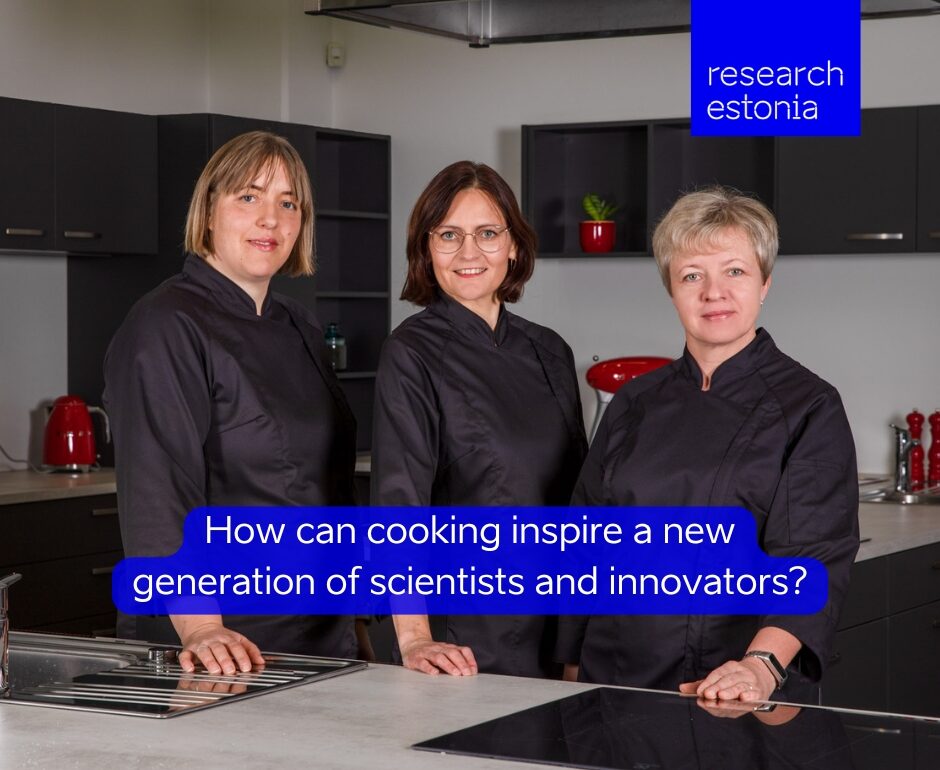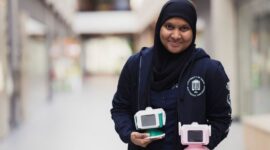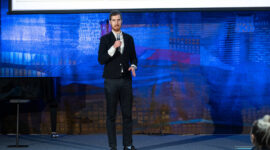Table of Contents
Science Kitchen – a culinary lab with a twist
At first glance, it is a beautiful space. Situated in the harbor-facing Mare building on Tallinn University‘s seaside campus, the Institute of Natural and Health Sciences’ Science Kitchen is located on the first floor in a room approximately 100 square meters, or about 1,100 square feet.
With high ceilings and windows on every side, one feels visible to every passerby inside the first-floor kitchen, as if a larger scientific experiment involving social observation is underway.
The Science Kitchen itself is outfitted with all modern conveniences and appliances. There are six fully equipped work stations with stovetops and ovens. One station has a camera installed which allows you to see the processes taking place in the pot from above. There is also an array of laboratory equipment, with tables for serving food. A colorimeter, a digital food scale, wireless temperature and pH sensors, digital and hand microscopes, a thermal camera, and automatic pipettes exist alongside spatulas, forks, spoons, and oven mitts.
There is also a smoothie bike with a blender installed at its front, and the bike is equipped with sensors that measure the energy used for making a smoothie. After riding the bike, and your preferred combination of fruits and vegetables are fully reduced to liquid, you can have a taste.
“In this way, we can teach students about the basics of eating healthy vegetables and fruits,” said Kristi Paas, a lecturer in home economics theory and didactics at TU. “We also create sensory experiences for them, they can for example discover if sliced , grated, or dried carrot and carrot juice taste somehowdifferent,” she says. “It’s interesting how they get to develop both their senses and vocabulary this way.”
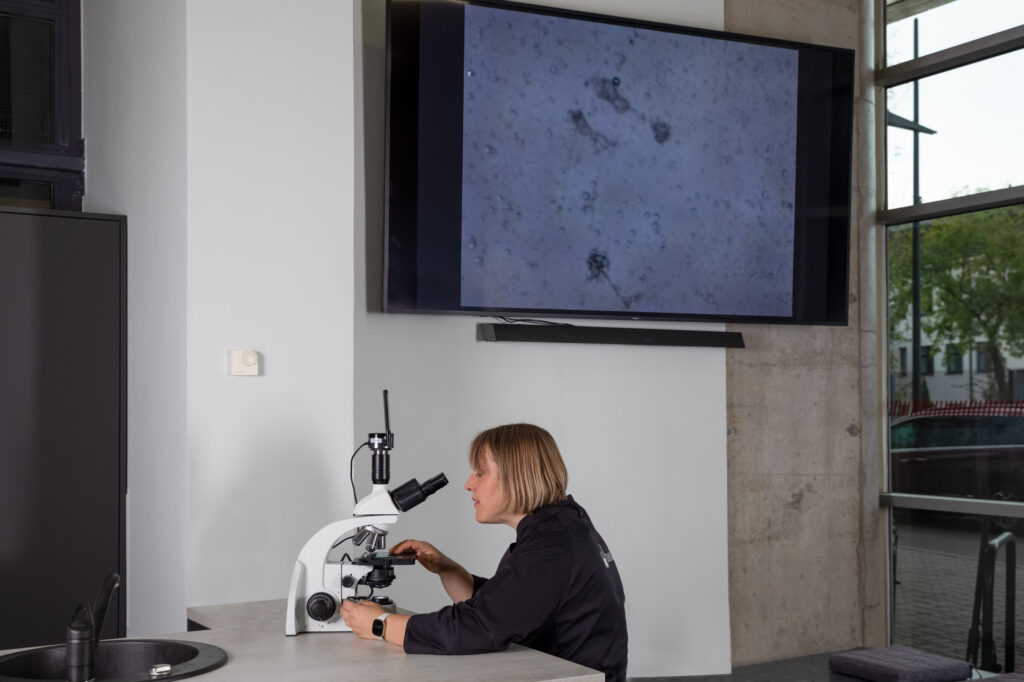
Experimenting beyond the textbook in the Science Kitchen and hands-on learning
Paas helped to found the Science Kitchen last year together with Jaana Taar, an associate professor of home economics who heads the kitchen; and Tiina Vänt, a food technology teacher. According to Taar, the idea behind the new Science Kitchen, which commenced operations in October 2023, is not exactly new. Tallinn University has had a study kitchen of some sort since 1964. Such a setting is necessary for educating teachers of home economics.
“It’s expected they have skills on how to supervise practical food preparation lessons in schools,” said Taar. “Plus on the nutrition side, and how to do the actual cooking, so they need to be prepared,” she said.
These everyday tasks are often connected to other topics in the natural sciences, chemistry, biology, and physics, Taar pointed out, and it is here where the new Science Kitchen seeks to bring together teachers and classes from different disciplines where they can learn in a practical, hands-on environment, instead of from a textbook or online assignment.
“It’s very motivating for students to deal with something they are faced with everyday,” she said.
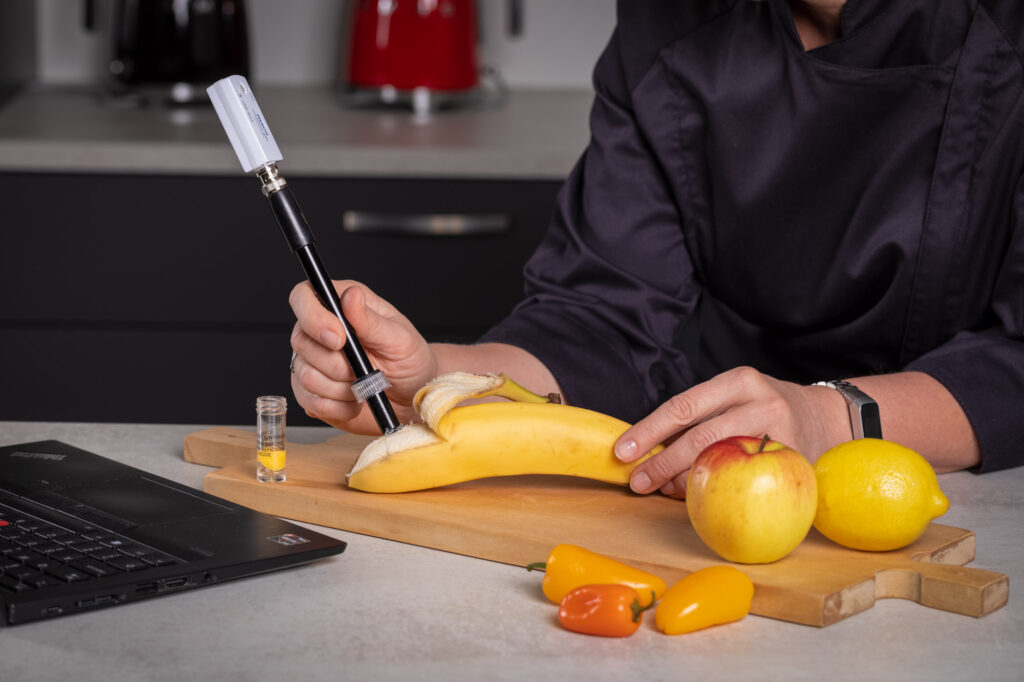
Science Kitchen Goes Global
Tallinn University’s Science Kitchen is currently being supported in part through two projects. The first, called STEAM for Home Economics and Research Exchange, or SHAREE, is funded under Horizon Europe. It commenced June 1 and will run through the end of May 2027. The total budget is €1.2 million, of which more than €683,000 was allocated to Tallinn University.
SHAREE is also what is called a Twinning Project, where different European universities work together to pool and improve competencies. The Atlantic Technological University of Ireland and the University of Helsinki are also participants in the project. Taar noted that Atlantic TU’s Sligo site has a strong home economics education background. There is also the benefit that Amanda McCloat, head of Atlantic TU’s St Angelas site, is also president of the International Federation of Home Economics, which will give the SHAREE project participants better access to other researchers around the world. The University of Helsinki similarly has competencies running diverse projects with various partners.
According to Taar, the aim of SHAREE is to develop the Science Kitchen further, to make it more financially sustainable, and to try to find more research funding while assembling an interdisciplinary team. There will also be site visits, not just between Estonia, Ireland, and Finland, but to other institutions in Europe to build out TU’s capacity in home economics and STEAM and to develop a European-scale research and innovation hub at TU.
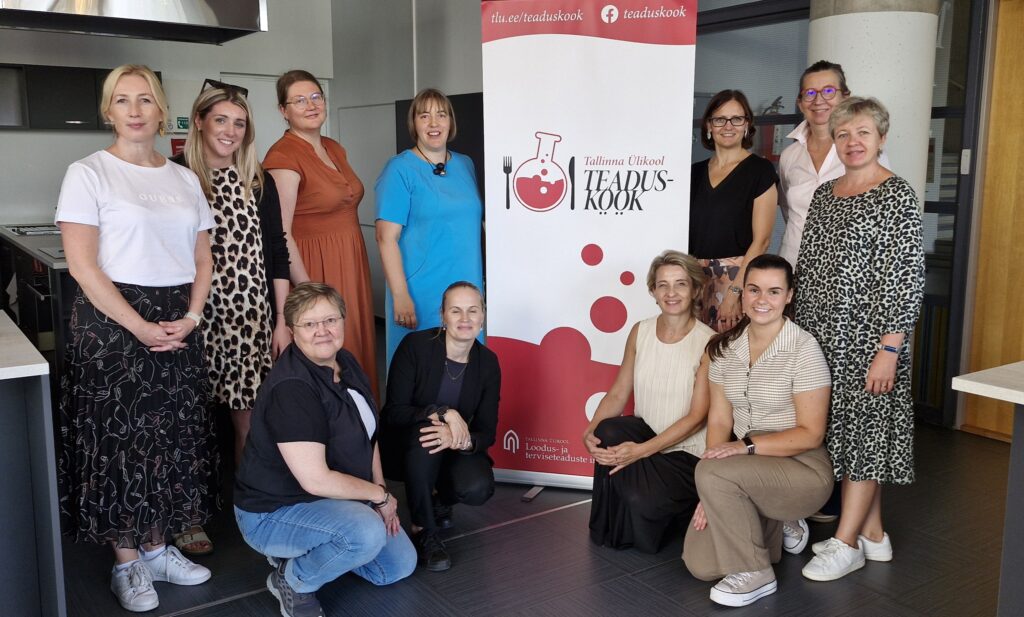
“We would also like to create a cluster of interested people and share these experiences,” Taar said.
The second project funding Science Kitchen is called Bridging STEAM Practices and Home Economics in Teacher Education (STEAMkitchen). This project started March 1 and will run through February 2026 with a total budget of €400,000, of which Tallinn University received more than €138,000 and is funded through Erasmus.
Paas said that the aim of STEAMkitchen is to produce guidelines and materials for teachers. Again one partner is the University of Helsinki. Anothers are Johannes Kepler University in Linz, Austria and University of Stavanger in Norway.
As noted, Science Kitchen’s focus on STEAM subjects is a component of both projects. STEAM, which stands for science, technology, engineering, arts, and mathematics, involves interdisciplinary, process-based learning. “Instead of teaching math in math lessons and biology in biology lessons, we try to teach them the content, not individual subjects,” Taar expalined.
“Science Kitchen is a meeting place for STEAM subjects and home economics,” added Paas.
“We try to bring them all together.”
Engaging students in Practical Science
In the context of the Science Kitchen, what this has meant is that classes, ranging from those in the primary school through the university level, as well as groups of teachers, are invited into the kitchen to take part in experiments and workshops. For example, the Science Kitchen has a composter on site with worms. A biology class prepared the compost, measured its pH levels, planted seeds in it and began to cultivate herbs, all while devising a system for lighting and watering the herbs and measuring various values.
“The herbs are used in preparing dishes in the kitchen, and the circle is completed,” remarked Taar.
All together, about 1,000 students and teachers visited Science Kitchen from October 2023 to June 2024, according to Taar. Topics depend on the age of the learners involved. Secondary schools might study protein changes during cooking and baking in science workshops, while high school students might take part in food-themed electives, or engage in setting up their own student companies based on food technology.
Estonia does have an active food technology industry, with local players like ÄIO, which is developing sustainable fats and oils, and TFTAK, a research institute focused on food and biotechnology.
Collaborations with industry leaders in Food Technology
Taar said that Science Kitchen is eager to partner with them, particularly within the framework of teaching students about technological innovation and entrepreneurship. She added that Science Kitchen eventually would like to expand its team by bringing in a scientist who could help initiate collaborations with entrepreneurs.
A few companies have supported Science Kitchen in its endeavors. E-Lux is the biggest supporter, having equipped the Science Kitchen with all of its kitchen appliances. Segafredo, the Italian coffee firm is also a supporter, and a coffee machine also has a place of honor in the kitchen, helping to create a cozy working environment for team building activities. Meira, Segafredo’s distributor in Estonia, is also a supporter. The company also provides the Science Kitchen with spices. There is also TVO, an Estonian maker of innovative waste sorting stations, which are also present in the kitchen.
According to Paas, the reaction thus far to the Science Kitchen and its activities has been “very positive.” She noted that everyone running the kitchen wears multiple hats as lecturers. “We have our fingers in many pies and everything is quite eclectic,” Paas said. “We teach courses and then come here and try to offer these students experiences they don’t get in the classroom.”
Looking ahead, the Science Kitchen team would like to influence changes in school education in Estonia, Taar said, particularly in home economics and science education. By educating teachers, both those who are alreading teaching and those who are studying to become educators, and by publishing supportive learning materials, the team believes it can introduce a new methodology into schools.
“This will help to increase the value of home economics education in Estonia,” Taar said, “which is especially important in the context of today’s challeges.”
This article is written by Justin Petrone. This article was funded by the European Regional Development Fund through Estonian Research Council.
“If this tasty tidbit on food sciences has whetted your appetite, savor the flavor of our next article where we explore the chemistry behind your favorite dishes! Read more about Boosting Meat Quality with Plant-Based Ingredients!
 Back
Back